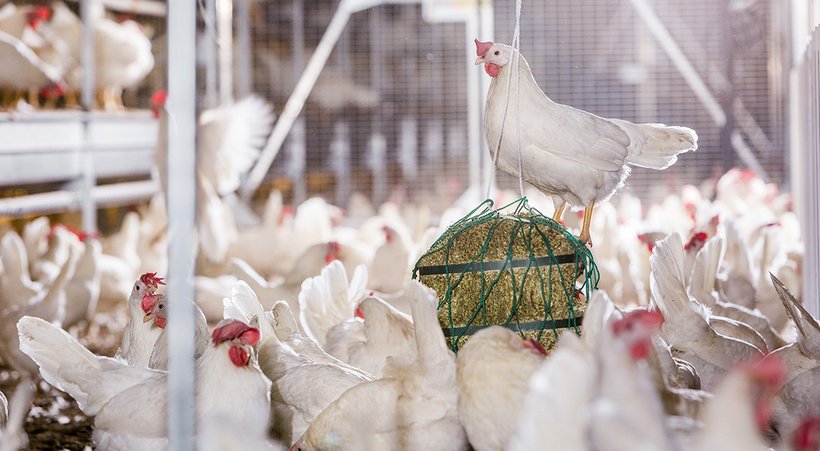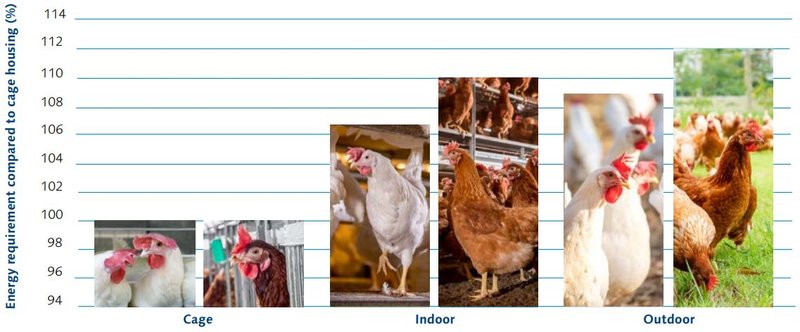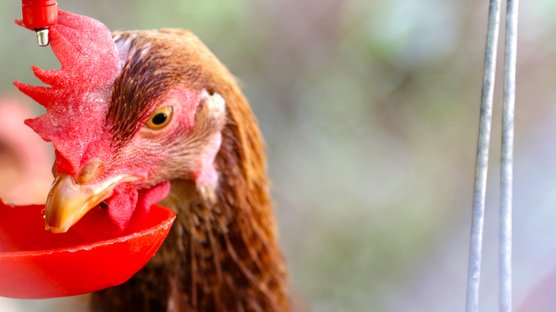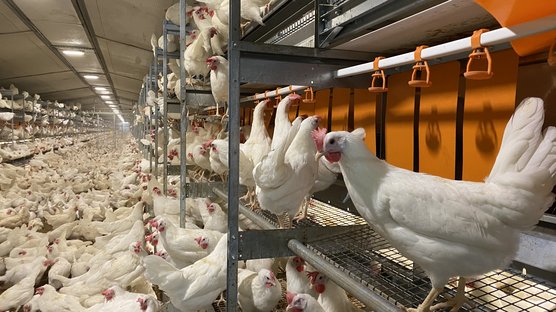
Published on July 12, 2021
Nutrition in alternative housing systems for layers
Alternative housing systems for laying hens are getting more and more popular. Birds housed in alternative systems, either aviary system, barn system, free-range or an organic system, are having more possibilities to express their natural behavior and therefore increased activity. Although management is completely different, nutrition during rearing and production requires some different approaches as well. Laying hens are increasing the nutritional need for activity and, depending on the type of system, they are facing temperature variations. More and more often, the chickens are not beak trimmed as well, which affects their (eating) behavior.
It is important to develop robust laying hens that continue to produce a high number of first eggs, maintain good health and are able to resist poultry disease pressures. In order to reach a high peak production, quality of rearing is an important factor. Poor body weight development at 5 weeks of age leads to a poor organ development and consequently a lower egg mass during the production cycle. The combination of more activity with the body weight development targets during rearing, will result in a higher feed intake in alternative housing systems.
It is recommended to focus on the following management aspects: never restrict water or feed, use similar feeder and drinker systems during rearing and production, and have a weekly measure body weight and uniformity till 30 weeks of age, followed by a monthly body weight measurement. For brown egg layers a uniformity of at least 85% should be targeted, and for white egg layers a uniformity of 90%.
Increase energy during the production period
The main difference in nutrition between cage and alternative housing is the energy requirements. Birds in alternative production systems are more active and, in case they have outdoor access, they are confronted by temperature variations. As production performance between the systems are equal, the energy needed for production is not different. Depending on the housing system, the temperature variation and the birds’ feathering, feed consumption can be increased by 3 to 20%. The figure below shows the effect of housing on the energy requirement. Energy requirement for production remains the same in different systems. However, energy requirements for activity depends on the type of system and is therefore higher in alternative and free range systems. Additionally, in free range systems, birds will use more energy for maintaining their body temperature, which is affected by the outside temperature.

The effect of housing on the energy requirement of White and Brown egg layers. Housing types are (enriched) cage, indoor (barn and aviary) and outdoor (free range and organic). Cage housing has been used as a reference for both white and brown laying hens.
Although the energy requirement is increasing depending on the type of system, the amino acid requirement is not. The amino acid requirement is mainly determined by daily egg mass production and daily feed intake. As mentioned above, production performance are not different between the different systems, and therefore nutrients required for egg mass production will not differ as well.
So an increase in energy level from an alternative production feed compared to a cage production feed, while maintaining the same requirements for protein and amino acids, is recommended. For example, if feed intake is increased in an alternative system, the percentage of amino acids can be reduced, or the level of energy can be increased to reduce daily feed intake.
Impact on bone metabolism
Skeletal health and breaking strength is affected by numerous of factors, including genetics, nutrition and housing system. Different studies have shown a higher breaking strength in laying hens housed in alternative systems compared with cage housed birds. This is due to activity, as birds have more freedom to walk around and have short flights in alternative systems. Activity increases the biomechanical load which helps to reduce bone loss and hence increase bone stability. Although alternative systems reduce bone loss, there is a higher incidence of bone injuries, like broken keel bones when birds are interacting with the system.
Despite there is a difference in activity and therefore in bone metabolism, there is no difference in calcium and phosphorus recommendations. During the rearing period the balance between Calcium and phosphorus remains Ca:P 2:1, with an increased level of calcium for egg shell formation during the production period.
Intact beaks and impact on feed management
It is well known that laying hens prefer to select the bigger grain particles, but it seems that laying hens with intact beaks even have a higher ability to select grains. Which makes feed particle size uniformity and feed management even more important[EL1] . Make sure feed particle size has a good distribution, with not too much fines and most of the particles of the same size. The more uniform feed particle size, the less segregation and selection and consequently more uniform egg size and good performance.
Insoluble fiber for feather cover
Birds have a specific requirement for fiber during egg production. It has been shown that birds that are deficient in fiber ingest feathers as a fiber source. A good supply of fiber improves feathering, decreases mortality, and improves both gut health and digestion, which will result in drier manure quality. Livability is positively influenced by fibers because it increases the feeling of satiety in birds, which in turn results in quieter birds, by eliminating need for feather ingestion (pecking and cannibalism).
Characteristics of good fiber sources for layers are insoluble fiber of a coarse structure. Cellulose, some hemicellulose and lignin are classified as insoluble fiber. These fibers are not digested or fermented in the gastrointestinal tract, and therefore serve as filling material that stimulate gastrointestinal movements without increasing the viscosity of the digesta. If fiber particles are small (finely ground), the effect on gastrointestinal movements is limited and there is a higher occurrence of birds consuming feathers, as shown in the Table 1 below, therefore coarse (over 2 mm) fiber is recommended.
| Control diet | Control diet + fine oat hulls | Control diet + coarse oat hulls | |
|---|---|---|---|
|
Gizzard content excluding feathers (g DM) |
0.53 | 1.22 | 3.56 |
| Feather in gizzard (g) | 0.47 | 0.46 | 0.02 |
For laying hens housed in alternative systems, fiber content between 4.5 and 6% is recommended. Those levels of coarse insoluble crude fiber (for example by increasing the level of oat hulls) gives good results in terms of production parameters and livability. If more concentrated diets are being fed, like at start of production or at hot climates, it will be challenging to reach those fiber levels, as fiber dilutes the diet. In those situations a slightly lower coarse fiber content is recommended.
Fiber should be provided directly in the building at all times. The use of a coarse fiber such as straw, alfalfa, wood by-products, rice husk, oat hulls, etc. is recommended. These materials must be available in the building via the feed or directly as a bale on the scratching area. To prevent floor eggs, fiber supply must be introduced after the peak of production when the birds are well trained to use the nest and we advise not spreading fiber directly on the floor.
Summary
In conclusion, the main differences regarding the nutritional requirements of laying hens in alternative systems are:
- Start with robust birds by ensuring they receive the right amount of fuel for energy at start of lay and obtain mature bodyweights in time
- Amino acid requirements are not significantly different, but the levels should be adjusted depending on the egg mass produced and observed feed intake. Feed intake tends to be higher in alternative systems
- In order to ensure good livability, the use of coarse insoluble fibre will improve feather cover and will lead to more docile behavior.
References
- Hetland, H., Svihus, B., & Choct, M. (2005). Role of insoluble fiber on gizzard activity in layers. Journal of applied poultry research, 38-40.



